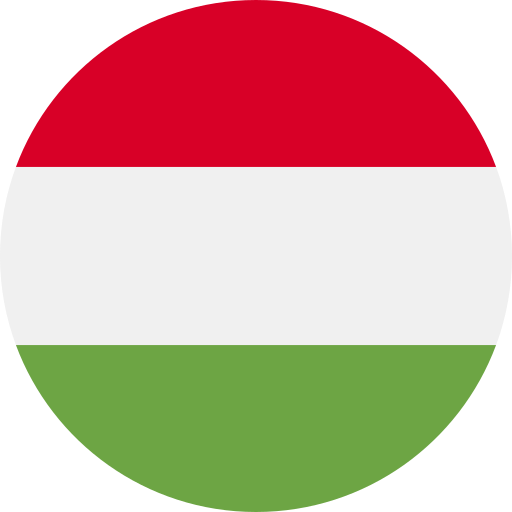Key Takeaways
- Regional Variants: Hungarian has multiple dialects, with Transdanubian Hungarian being a prominent variant spoken in western Hungary, distinct from the Standard Hungarian used officially across the country.
- Phonetic Differences: Transdanubian Hungarian features unique phonetic characteristics, including vowel shifts and softer consonants that create a melodic tone, contrasting with the clearer articulation of Standard Hungarian.
- Grammar and Syntax Nuances: Both variants utilize agglutination for word formation, but Transdanubian may incorporate specific suffixes or idiomatic expressions that enrich its local flavor compared to the standardized grammatical rules of Standard Hungarian.
- Cultural Significance: Understanding these dialects is vital for effective communication; familiarity with regional expressions fosters connections and enhances interactions within Hungary’s diverse linguistic landscape.
- Common Roots: Despite their differences, both Transdanubian and Standard Hungarian share foundational similarities in vocabulary and basic grammar structures due to their common linguistic heritage.
- Sociolinguistic Factors: The use of each variant reflects sociocultural identity; while Transdanubian emphasizes regional pride, Standard Hungarian serves as a neutral medium facilitating clear communication across diverse backgrounds.
Ever wondered how Transdanubian Hungarian differs from Standard Hungarian? If you’re diving into the rich tapestry of Hungary’s languages, understanding these distinctions can unlock a deeper appreciation for the culture and communication styles.
Overview of Hungarian Language Variants
Hungarian features several regional variants, primarily categorized into Standard Hungarian and various dialects. These variants reflect the diversity within Hungary’s linguistic landscape.
Transdanubian Hungarian stands out among these dialects. It’s spoken in the western part of Hungary, encompassing areas like Győr-Moson-Sopron and Veszprém counties. This variant exhibits unique phonetic characteristics and vocabulary influenced by neighboring languages, enhancing its distinctiveness.
Standard Hungarian serves as the official language. It’s used in education, media, and formal communication across Hungary. While it maintains consistency nationwide, local dialects add richness to everyday conversation.
Understanding these differences is crucial for effective communication. When you engage with someone from a specific region, familiarity with their dialect can foster connections and enhance interactions.
Overall, while both Transdanubian and Standard Hungarian share a common root, they offer varied expressions of culture and identity within Hungary’s vibrant linguistic tapestry.
Characteristics of Standard Hungarian
Standard Hungarian features distinct characteristics that distinguish it from regional dialects like Transdanubian Hungarian. Understanding these traits enhances your grasp of the language, especially if you’re navigating communication in Hungary.
Phonetics and Phonology
Standard Hungarian employs specific phonetic rules that contribute to its unique sound system. Vowel harmony plays a crucial role, ensuring that vowels within a word harmonize based on frontness or backness. For example, when using front vowels such as “e” or “i,” the suffixes must maintain this characteristic. Consonants also exhibit voiced and voiceless distinctions, impacting pronunciation significantly. The standard variant maintains clear articulation across all phonemes, promoting intelligibility in diverse settings.
Grammar and Syntax
Grammar and syntax in Standard Hungarian follow established rules that differ from local dialects. The use of agglutination is prominent; words often consist of several morphemes combined to convey nuanced meanings. Cases play an integral part too—there are numerous noun cases (over 18), each serving specific grammatical functions such as possession and directionality. Sentence structure typically adheres to a subject-verb-object (SVO) order but can vary for emphasis or stylistic purposes. This consistency makes learning Standard Hungarian more accessible for non-native speakers while still allowing flexibility in expression.
Familiarity with these characteristics not only aids comprehension but also enriches your interactions with native speakers across various contexts in Hungary’s cultural landscape.
Characteristics of Transdanubian Hungarian
Transdanubian Hungarian exhibits distinct linguistic features that set it apart from Standard Hungarian. These characteristics reflect the region’s unique cultural influences and historical developments.
Phonetics and Phonology
Transdanubian Hungarian showcases notable phonetic variations, including vowel shifts and consonant modifications. For instance, speakers often exhibit a tendency towards softer consonants, which alters the overall sound quality. Additionally, certain vowels may take on different pronunciations compared to Standard Hungarian, leading to a more melodic tone in conversation. This phonological diversity contributes to its rich auditory landscape.
Grammar and Syntax
Transdanubian Hungarian employs grammatical structures that differ subtly from those found in Standard Hungarian. While both use agglutination as a primary method for word formation, regional dialects may favor specific suffixes or prefixes that aren’t prevalent in the standard version. Sentence structure remains largely similar; however, local expressions can introduce unique idiomatic phrases and colloquialisms that add depth to communication within the region. Understanding these nuances enhances appreciation for the language’s complexity and regional identity.
Overall, these characteristics highlight how Transdanubian Hungarian not only serves as a means of communication but also reflects the area’s cultural heritage and social dynamics.
Key Differences in Usage
Understanding the key differences in usage between Transdanubian Hungarian and Standard Hungarian enhances your comprehension of Hungary’s linguistic landscape. These distinctions play a crucial role in effective communication across various contexts.
Regional Variations
Regional variations significantly impact how both forms of Hungarian are utilized. Transdanubian Hungarian, spoken primarily in western regions like Győr-Moson-Sopron and Veszprém counties, showcases unique phonetic traits. You’ll notice vowel shifts that create a melodic quality distinct from Standard Hungarian. In everyday conversations, local idioms and expressions emerge, enriching communication within communities.
Standard Hungarian serves as the common language for education, media, and formal settings across Hungary. Its consistent grammar and vocabulary help non-native speakers grasp the language more easily. This standardization aids clarity when communicating with individuals from different regions.
Sociolinguistic Factors
Sociolinguistic factors further influence how these dialects are perceived and used. Transdanubian speakers often embrace their regional identity through their dialect, fostering community ties and pride among locals. You might find that discussions about food or traditions highlight specific terms unique to this variant.
Conversely, Standard Hungarian represents a neutral ground for diverse interactions—especially useful in professional settings where clarity is paramount. It enables seamless exchanges between speakers from various backgrounds without regional bias affecting understanding.
Recognizing these sociolinguistic nuances not only enhances your appreciation for the language but also improves your ability to connect with Hungarians on a deeper level. Understanding what drives these differences enriches your interactions while navigating cultural landscapes throughout Hungary.
Similarities Between Variants
Transdanubian Hungarian and Standard Hungarian share several foundational characteristics that highlight their common roots. Both variants stem from the same linguistic heritage, ensuring mutual intelligibility among speakers. This shared history contributes to similarities in vocabulary, basic grammar structures, and phonetic elements.
Vocabulary
You’ll notice many shared words between Transdanubian Hungarian and Standard Hungarian. Everyday terms like „ház” (house) or „víz” (water) appear in both dialects without significant variation. Regional expressions may differ, but the core vocabulary remains largely intact.
Grammar Structures
Similarities in grammar also exist between these two forms of Hungarian. Both utilize agglutination, a process where suffixes attach to base words to modify meaning. For instance, you can form plurals and possessive constructions similarly across both variants.
Phonetic Traits
Phonetically, while Transdanubian features some unique variations—like softer consonants—the overall sound system retains familiar characteristics found in Standard Hungarian. You might find vowel harmony principles apply similarly in both dialects, allowing for smoother transitions between sounds.
Cultural Expressions
Culturally, both variants reflect Hungary’s rich heritage. Whether speaking Transdanubian or Standard Hungarian, you engage with a language steeped in tradition and community identity. This connection fosters a sense of belonging among speakers regardless of regional differences.
Recognizing these similarities enriches your understanding of how language functions within diverse communities across Hungary while enhancing communication with locals who embrace their dialects proudly.
Conclusion
Understanding the distinctions between Transdanubian Hungarian and Standard Hungarian enhances your grasp of Hungary’s vibrant linguistic landscape. These differences reflect not just regional identities but also cultural nuances that enrich interactions with locals.
By familiarizing yourself with these dialects, you can navigate conversations more effectively and appreciate the diverse expressions of culture throughout Hungary. Whether you’re engaging in casual dialogue or formal communication, recognizing both variations ensures clearer understanding and deeper connections with Hungarian speakers. Embracing this knowledge will undoubtedly enhance your experience while exploring the rich heritage of this unique language.
Frequently Asked Questions
What is the main difference between Transdanubian Hungarian and Standard Hungarian?
Transdanubian Hungarian features unique phonetic traits and vocabulary influenced by neighboring languages, while Standard Hungarian serves as the official language used in education and media. Understanding these differences enhances communication within Hungary.
Why are dialects important in understanding Hungarian culture?
Dialects reflect regional identities and cultural nuances. Familiarity with local dialects like Transdanubian Hungarian fosters deeper connections and improves interactions, making it essential for appreciating Hungary’s diverse linguistic landscape.
How does Standard Hungarian differ phonetically from Transdanubian Hungarian?
Standard Hungarian has distinct phonetic rules such as strict vowel harmony and clear articulation. In contrast, Transdanubian Hungarian exhibits softer consonants and vowel shifts that create a more melodic tone during conversation.
Are there similarities between Transdanubian and Standard Hungarian?
Yes, both variants share foundational characteristics stemming from the same linguistic heritage. They have similar vocabulary, grammar structures (like agglutination), and mutual intelligibility among speakers despite their regional differences.
What role do sociolinguistic factors play in these dialects?
Sociolinguistic factors influence how each dialect is perceived. Transdanubian speakers often embrace their regional identity to foster community ties, while Standard Hungarian provides a neutral ground for professional interactions across diverse groups.







